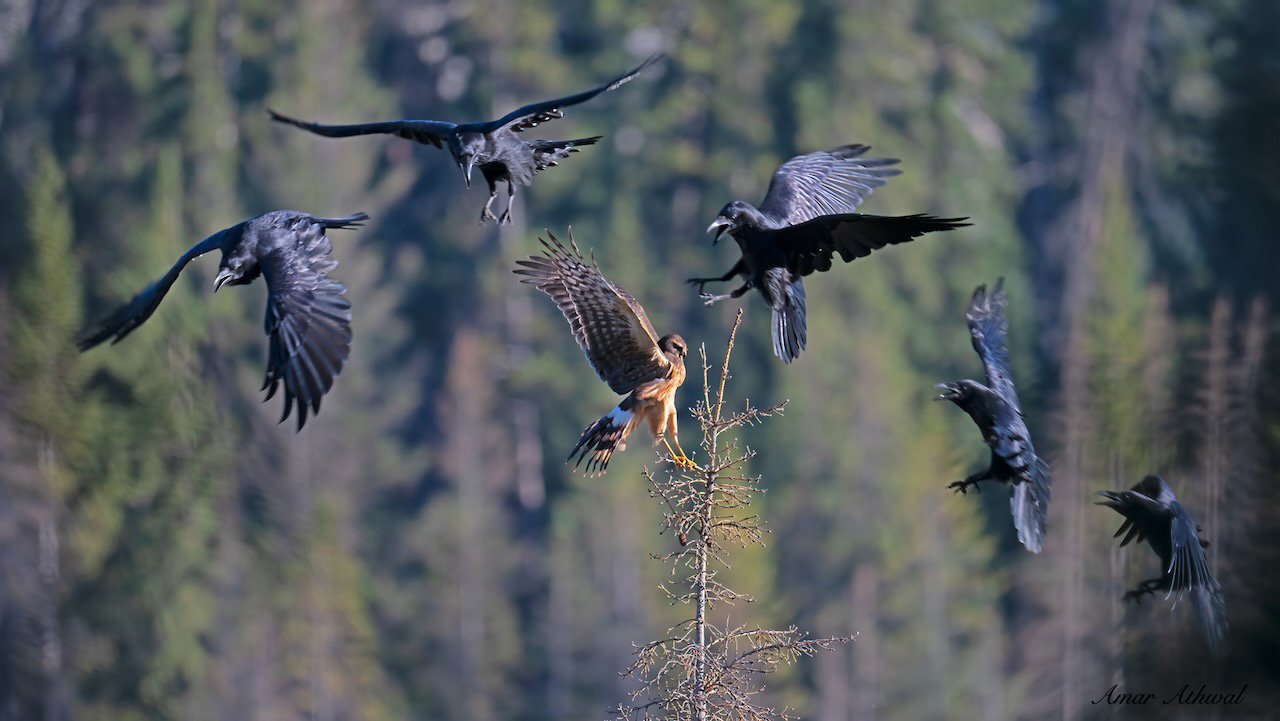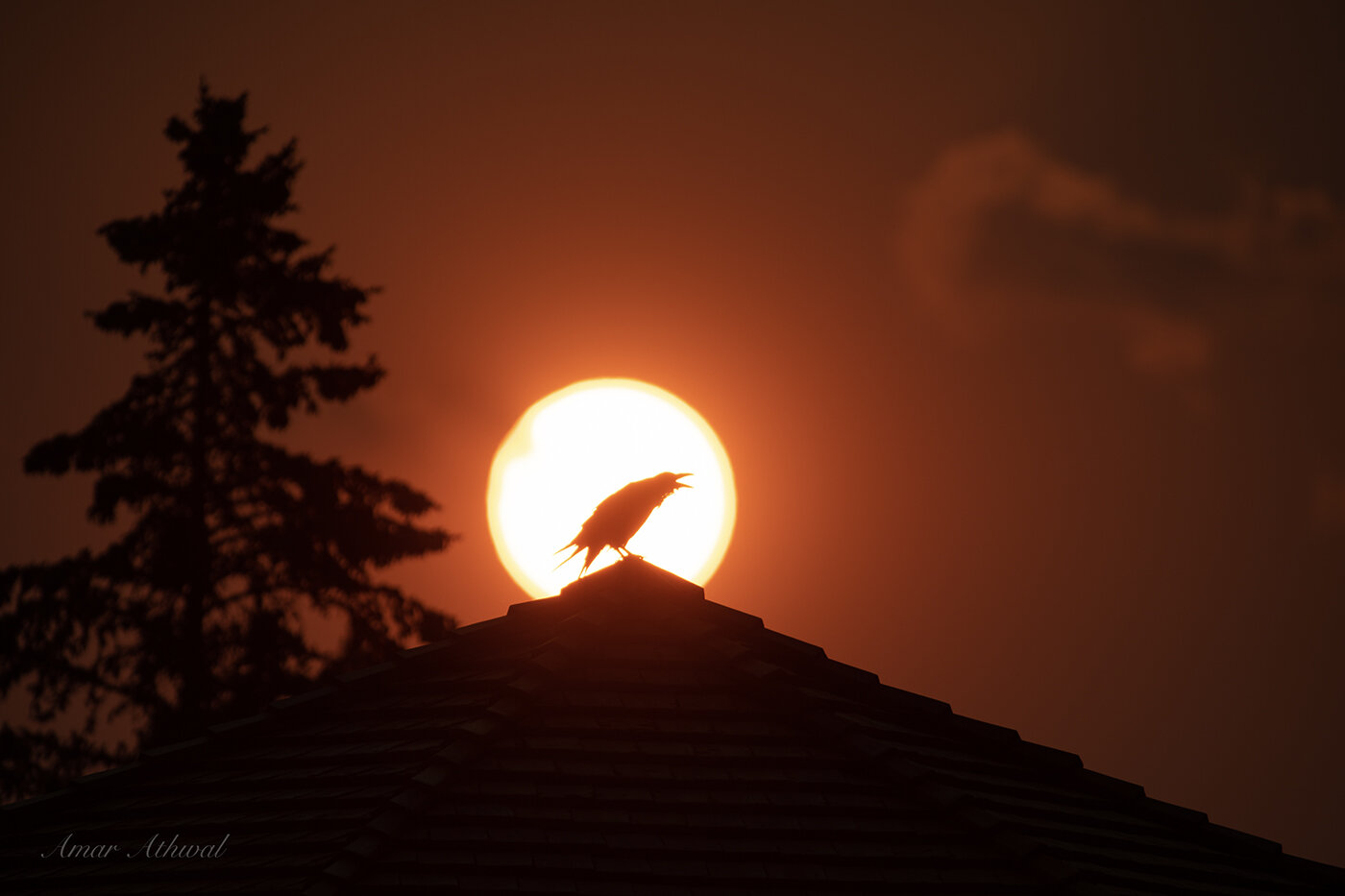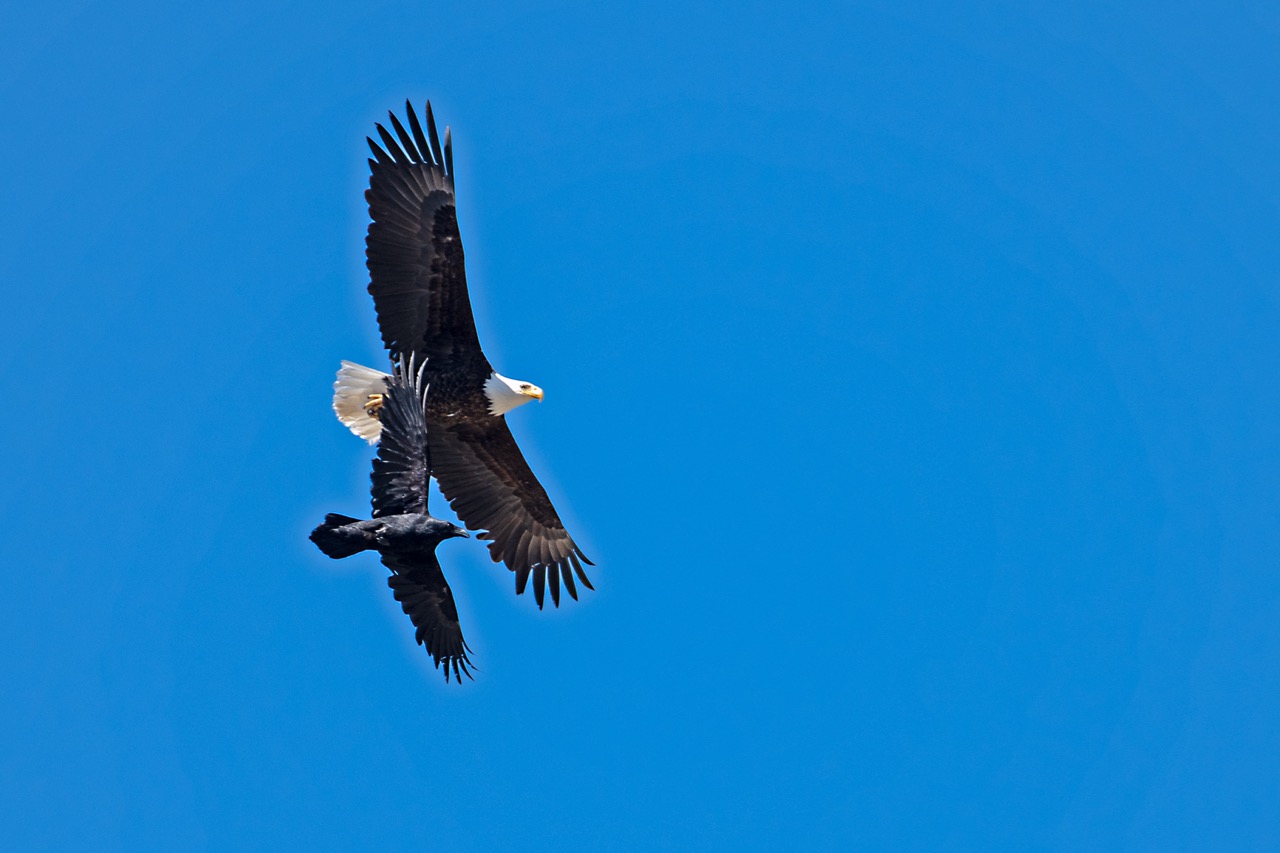I wanted to talk about the birds, but I think you might be more interested in what is going on in the image and how I got this picture. Perhaps another time I can discuss the Northern Harrier, which has a face that is owl-like, allowing it to hear voles and mice underneath the vegetation. I would also have talked about how this long-tailed hawk glides over the marsh or grassland while hunting for its prey. How they primarily hunt small mammals and birds, but they are also capable of taking larger prey like rabbits and ducks. I guess I will talk about this beautiful bird another day.
I also wanted to discuss the Common Raven. While the harrier is found across North America, ravens are found throughout North America and around the world in the Northern Hemisphere. They have followed people for centuries, for a chance at a quick meal. I would have liked to talk about how they are one of the most intelligent birds. Young ravens enjoy playing, often dropping sticks and diving to catch them. And how they work together to distract adult incubating birds at seabird colonies while another raven grabs an egg or a chick. They have also learned that the sound of a gunshot may mean a carcass nearby, providing an opportunity for food. They are excellent flyers; one bird was even seen flying upside down for nearly a kilometer.
But for now let’s talk about how this picture came about. If you haven’t guessed by looking at the image, there is only one raven and one harrier represented. I was taking pictures of the harrier when the raven flew into the frame. Ravens never miss a chance to mob eagles, owls, and hawks. While I was photographing the harrier, this raven was perched on a nearby tree, calling out. Then it flew in from the back right, going over the hawk and out the front left. By using continuous shooting mode, I was able to capture several images of the raven’s flyby. To avoid overlapping of the raven, I chose five images of it and one of the harrier, then layered them together using an application. With the background having the same exposure, I digitally created one image from six.






